
How can new music compete against Classic Rock? That is the question, as ironic as it may sound.
Nearly four decades ago when I was trying to just get ambitious broadcasters to take a risk on an all-gold radio format on the FM band, featuring the Beatles, Led Zeppelin, and the Eagles, I never could have dreamed anyone could possibly ask that question.
Back in ’83, the world of radio revolved all around new music. MTV was hot, fresh, in your face, and exciting, while mega-artists like Michael Jackson, Madonna, and Hall & Oates were ripping up the charts. Top 40 radio was experiencing not just a renaissance, but a massive wave of success. Mike Joseph’s “Hot Hits” pop radio format was generating massive ratings – and lots of cash.
Still, there was much grousing in the rock music community as Classic Rock radio stations began to get traction in Arbitron, often at the expense of the rock stations in town. And it didn’t take long for me and other programmers to feel the heat from the labels. The story you see at the top of today’s post is about 35 years-old.
Billboard reluctantly covered the format’s ascent at the 18-month mark, and its impact on mainstream rock. As writer Kim Freeman concluded, “Classic rock (radio) appears to be here to stay.” As the headline conjectured, “Some say it’s just a passing phase.”
That was then. This is now. And in many ways, very little has changed.
Just last week, a story in BBC News by Mark Savage carried this ominous – but modern – headline:
“Classic bands accused of crowding out new music on streaming services”
As we’re nearing the one-year mark of COVID, more and more bands are feeling the pain of no touring and meager merch sales. And as they’re learning, musicians cannot live by streaming royalties alone.
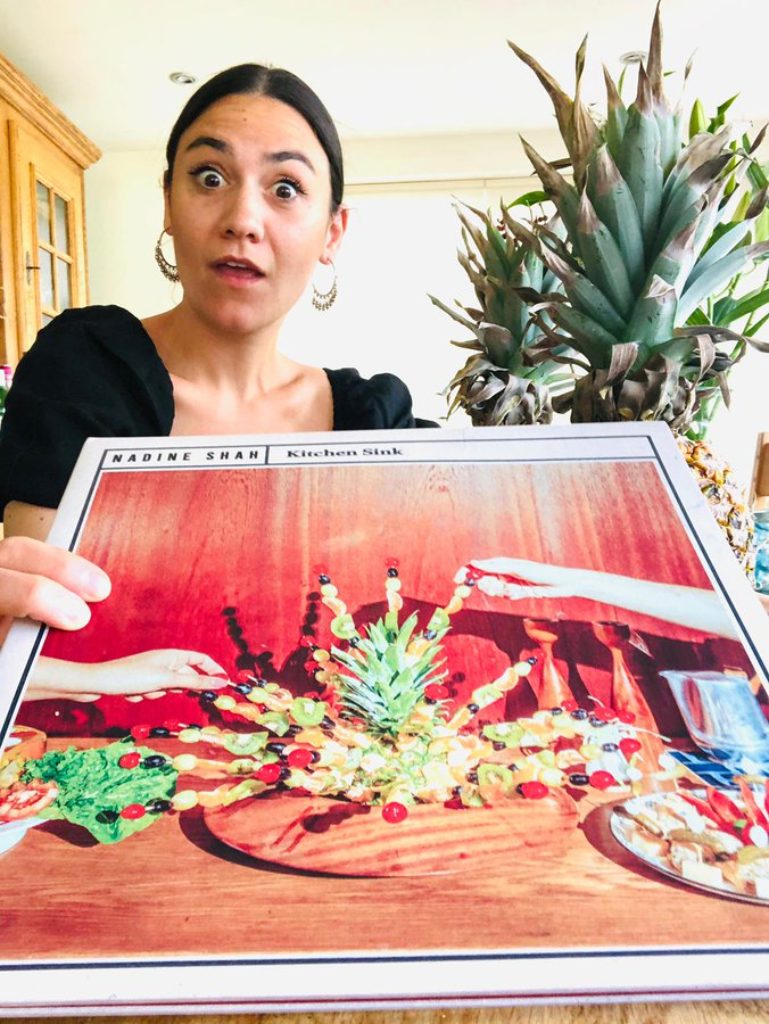
And they’ve taken their plight to Parliament in an effort to get resolution. Savage tells the story of musician Nadine Shah (pictured right) who “has been forced to move back in with her parents” due to insufficient earnings from streaming. (As other Millennials might remind her, join the club.)
It is undeniably difficult for new, emerging artists to break out under the shroud of the pandemic. But some of the proposed remedies that attempt to even out the music streaming playing field coming out of the UK are creative, but patently absurd.
It turns out that in 2019, three of the country’s top 10 best-selling albums were greatest hits compilations by Queen, Elton John, and Fleetwood Mac – artists old enough to be Natalie Shah’s grandparents.
David Joseph, CEO of Universal Music UK, offered up a novel suggestion that would help more obscure artists like Shah: streaming services might institute a user-centric royalty where if you listened to an emerging artist like Shah during any given month, “your entire subscription fee would go directly to her,” rather than to Elton John or Adele.
Something tells me that concept won’t fly.
From the beginning of recorded music history, new artists have had to hack it out against established stars. Clearly, COVID exacerbates this battle, but today’s future hit-makers and emerging artists have always had to compete against behemoths that offer familiar music – and memories – from the past.
The problem during COVID has been exacerbated by so many artists sitting on the sideline, waiting to release their next project until the pandemic dies out. In retrospect, you have to question that logic because being holed up at home is the perfect environment for music discovery and appreciation.
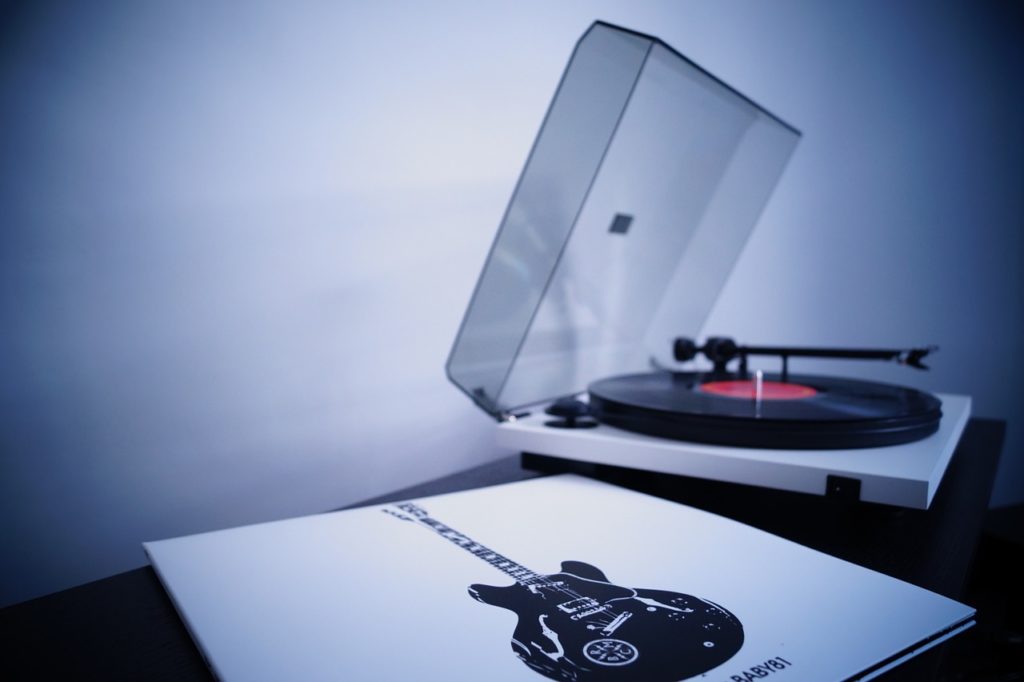 How else would you explain the observations by Julian Chokkattu, a writer for Wired who penned an insightful first-person essay last month about the tactile joys of intentionally listening to an album (both sides), rather than random songs on a Spotify playlist. Consider his quote about the enjoyment of albums played on a turntable:
How else would you explain the observations by Julian Chokkattu, a writer for Wired who penned an insightful first-person essay last month about the tactile joys of intentionally listening to an album (both sides), rather than random songs on a Spotify playlist. Consider his quote about the enjoyment of albums played on a turntable:
“Music quality isn’t why I’ve been so enamored by this new hobby. It’s that physical experience of using a turntable; the sensation of the soft crackle before a track begins; along with finding, curating, and seeing a stack of records grow in my media console that’s made the most dramatic impact.”
It’s not just a handful. At the same time Boharik was enjoying a Ray Charles album, the Consequence of Sound shared Billboard data revealing more 1.8 million albums were sold in the U.S. during the week before Christmas – the all-time record since Nielsen/MRC Data started tracking this stuff. Previous records were set during the prior weeks of December last year.
During that record-setting week, the top-selling vinyl album was Paul McCartney’s new masterwork, III. It sold 32,000 units, making it the biggest selling vinyl record in nearly three decades. Sorry, Nadine.
Radio still plays a starring role in the airplay/sales equation. But discovering great music has been made more complicated by fragmented exposure due in large part of having a multitude of disparate distribution outlets. Even in the ’90s, an artist either had radio play or went home. Today, there are lots of places where new music is being exposed. It’s just become arduous to amass enough critical mass exposure to make a living.
Today, broadcast radio isn’t what it used to be, but still remains essential for success. Airplay from streaming services, YouTube, or satellite radio play a role, as does music featured in movies, TV shows, and in newer sources like TikTok videos. Programmers can learn a great deal about the music and how it is being enjoyed by fans on different platforms.
That’s a far cry from calling record stores every Monday, and conducting crude callout research among small samples of listeners – two of the most popular tools for gauging hits back in the Cro-Magnon era when I last programmed.
Today, the science – and art – of finding hits is a topic of conversation, especially in the age of COVID when new music has wilted. Or has it?
 This is a topic that’s been popular the past couple weeks in The Sands Report, the trade publication devoted to Alternative radio. Richard Sands queried a number of luminaries from the programming community, pondering where hits are coming from and how to find them.
This is a topic that’s been popular the past couple weeks in The Sands Report, the trade publication devoted to Alternative radio. Richard Sands queried a number of luminaries from the programming community, pondering where hits are coming from and how to find them.
On the one hand, modern tools like tracking Shazam histories can be telling, but not necessarily indicative of whether an emerging song might actually go on to become a hit. Ultimately, some of Richard’s questions – especially this one – merit conversation:
How Can The Format Do A Better Job Building Artists?
He’s talking ALT, of course. But that’s a big question, because artist centricity is a big reason why music formats have always had legs. The audience (and radio) helps establishes its “Mt. Rushmore Artists.” And radio programmers and music directors respond accordingly when new music is released by a core band or one comes to town to play a concert – or two.
Makes sense, right? Until it doesn’t.
Without albums, it is downright difficult for artists to establish strong, reliable bases of loyalty and scale. We now live in a world of singles, of one-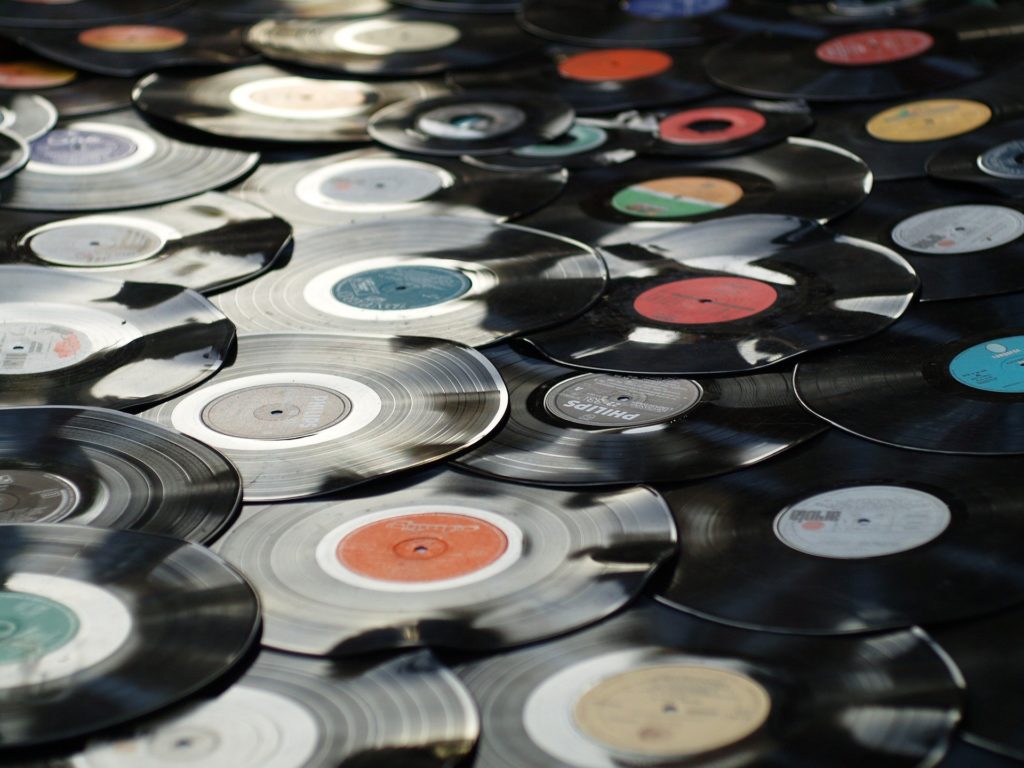 offs, where it becomes daunting for artists to gain any level of long-term fan traction.
offs, where it becomes daunting for artists to gain any level of long-term fan traction.
Back in the ’60s and ’70s when a whole new roster of great artists established their franchises, they had a body of work from which to draw; catalogues of music to be enjoyed by new fans and old stalwarts alike. Album art and liner notes illuminated the bond, creating deep connections between artists and fans.
You got “into” a band. You talked up an album. Consumers were promoters – and not because they were paid to “influence” tastes.
Today, there are no albums. And thus, loyalty becomes transient. It is about songs – not artists. And that makes radio programming a much more dangerous profession.
That’s when I started thinking about how streaming and song skipping have changed the way real people enjoy music, and the crying need for radio’s remaining PDs to educate themselves on the myriad ways music is being consumed in this millennium.
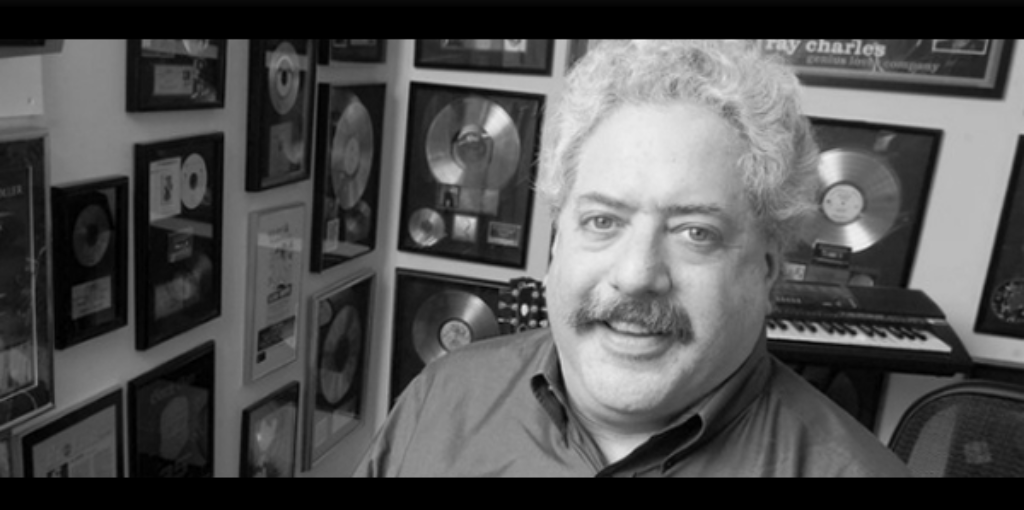 And I flashed back to Lee Abrams (pictured left), and his visionary Superstars rock format from the ’70s that changed the sound of radio, as well as shaping music tastes for decades.
And I flashed back to Lee Abrams (pictured left), and his visionary Superstars rock format from the ’70s that changed the sound of radio, as well as shaping music tastes for decades.
One thing that hasn’t changed about the world of labels is that hit singles are chosen based on a variety of factors, some sensible and some irrational.
And aside from that first release, programmers were tasked with finding other great tracks on the same album that might be as good as – if not better than – the single.
Abrams came up with a novel way to figure this out – or at least to derive important clues.
He placed simple cards in record stores in his client markets like the one you see below. Every time someone bought an album, they were asked to fill one of them out.
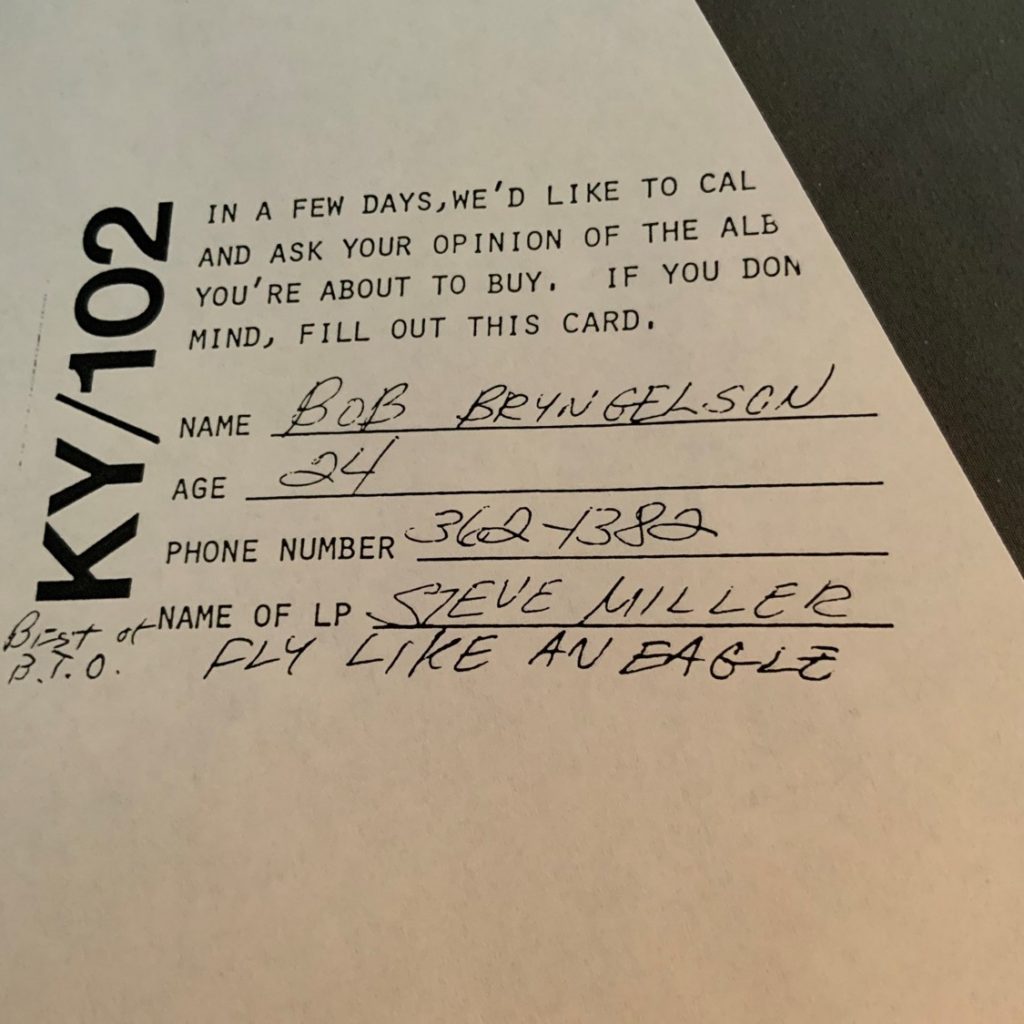
A phone call back to these album buyers revealed important patterns in determining secondary and tertiary hits, because back then, most people listened to entire albums – again and again and again. Who better to pinpoint other great songs from these collections than people who invested a few bucks in those albums to begin with. Given the cover-to-cover way in which just about everyone listened to vinyl records, these buyers were in a position to become “tastemakers.”
You might look at a system like this and conclude that it’s crude and certainly not “scalable.” But what it did provide was a window into the mindset of the audience. Lee told me the cards became a reliable way to determine whether an “artist’s buyers were our listeners.” The system also made it possible to identify people who developed a track record for picking hits from the album.
And it spoke to the need of programmers to find a way to tap into the hearts and souls of consumers, even if you have to resort to nontraditional ways of doing it.
As counter-intuitive as it may seem, I wonder whether yesterday’s programmers actually had a better bead on music tastes, thanks to analog tools like vinyl records, turntables, and little cards at record stores.
Will new music find its footing, post-pandemic?
Will radio programmers develop new and better ways to track tastes and consumption?
Is this return to vinyl just a momentary blip on the musical radar screen?
Stay tuned.
You can learn more about Lee Abrams and what he’s thinking about here.
- What Is It With Female Robot DJs? - April 30, 2025
- Why “Dance With Those Who Brung You” Should Be Radio’s Operating Philosophy In 2025 - April 29, 2025
- The Exponential Value of Nurturing Radio Superfans - April 28, 2025




Speaking generally, I think the industry has stacked the deck against new talent.
First, a lot of formats rely on ‘best’ branding – the best hits of the past, the best rock, the best classic rock, the best classics. All of which don’t leave a lot of room for new music.
Second, overly-curated playlists. I often complain that (some) programmers and music directors have turned bands like the Eagles or Led Zeppelin into one-hit wonders by only playing Hotel California or Stairway to Heaven.
Third, computerized music and scheduling. Gone are the days when MCR had turntables and cd payers – it’s all on a hard drive now. Air talent is unable to grab an album and play something off it, and if it’s not ‘in the system’ forget it.
And the marginalization of air-talent as a musical influencer. At one time, jocks made up their own playlists, decided what was played i what order, and were tasked with making the hour time out. Ask anyone who worked with turntables what songs were needed for a bathroom break, or to make an hour work out. Now computers handle all of that, air staff is asked to track for other stations in the cluster, and there’s not time left for them to listen to new music that may make it’s way to the station.
Do staff even talk about music any more? Maybe that’s at the root of things – there used to be a lot more excitement about music in radio stations.
Or maybe I’m just turning into one of the old guys in the balcony on the Muppet Show.
PV.
Let’s add in ratings pressure, especially for larger PPM markets. There are still echoes of warnings more than a decade ago imploring PDs to play it safe. If new music got major ratings, there would be a lot more stations playing it.
It’s getting crowded up here in the balcony. Thanks for reading the blog & offering your POV.
I think it’s funny how, when someone has a problem, they knee-jerk turn to government to ‘fix it’.
People are listening to classic hits because there’s something there that they are not getting from the new music. Figure out what that is and go compete with them.
Legislation will not solve your problem.
Carter, no it will not. It might prop up some artists, but not for long. If you’re as talented as Billie Eilish, you’ll cut through. That may be a high bar, but that’s the way it is. Just ask most podcasters.
I’m sorry, I have to bite. ” as talented as Billie Eilish” Mumble Bjork?! Really. It’s basement girl with autotune, beat detective a bucket-full of samples and Albeton. That’s setting the bar mighty low for ‘talent.’
h’okay John…settle down with the boring takes.
Sorry, too many years in talk radio…
I’ll try to be a better.
one of my first jobs as an intern @ KPRIFM san diego was stuffing those cards into bags at Licorice Pizza (a record store) when they launched the superstars radio format. I somehow ended up with all the programming memos and original playlist. I think I poached it from the trash when they asked me to take it out!
Michael, it turned out to be great “research,” especially given the way we all listened to music in those days. Thanks for chiming in.
I think new music has already competed by borrowing from the classic sound. Competing really at this point is competing with well established brands that the media and radio have created by building a brands that have a share of voice that proliferates itself. It’s very difficult for New music can’t really compete with that.
Not to mention all those cover versions of Classic Rock, Classic Hits, & Oldies. It’s times like this I think about “Africa.” Thanks, Billy.
What are your thoughts on late-night radio? Or more to the point, live late-night radio?
I grew up listening to “Brave New Waves” on CBC Radio, a show that didn’t start until 11 PM and went much later than I was ever able to stay awake for. What BNW was known for in Canada was introducing listeners to a wide range of music by sharing the work of developing artists and also by interviewing them.
Call me crazy but I think that there’s a place for a show like that in America. A show that seeks to break new artists, conducts interviews with artists and, here’s the twist for 2021 as we try to recover from the economic devastation of Covd-19, serves as an advertisement for the market that it serves. We do the latter by talking with artists from outside of our time zone and doing what we can during the interview to highlight the great things about our area and why they should visit our fair city when they go out on tour.
Would speaking to The Bullseyes from Poland or OhChill from Korea get them to visit Indiana, PA if they were to tour the US? No, probably not but if someone who was fluent in their native language, even though they perform in English, joined the late-night host in the studio there’s an opportunity to make a personal connection, and maybe the band makes an effort to visit a college town that’s in need of revitalization. Either way we get to put our city’s name out there with out-of-region and international guests. (Marfa wasn’t cool until someone made it cool.)
As you might be able to tell our lockdown has given me lots of time to contemplate these things.
In the 80’s downturn while in Detroit I remember reading an article about a yearly study the U of M did, seemingly for decades. Can’t remember the name but it was roughly a state of the nation’s overall feel/happiness economically and for other factors too. Their summation on it all was that in down times when people are antsy and fearful of the future they long for the good old days and lean towards the past for most things. When the future looks bright, they lean forward because it’s not so scary. There’s been a bunch of recessions etc since that early 80’s one. I haven’t followed it religiously but on the times I remembered that article (usually in a downturn), station formats usually lined up with that thinking. Top 40 smoked through up times and gold leaning ones in bad. What do you think we’re in now? Stock market is up but most people are uber hurting. So, I’d guess down? Could be a factor. Lots of seemingly unrelated things go into why people do what they do.
Pat, you may be thinking about the “Misery Index,” which I believe was dreamed up in the 70s. I believe it was brought back (with a different calculation) last year – for obvious reasons. I’ve already seen data that indicates that just in the past couple weeks, the percentage of people who feel the US is on the “right track” is sharply up (and “wrong track” is correspondingly down). So, hopefully, we’re pulling out of this.
I think that observation that music reflects the mood of the culture, and last year was very much as you describe it – a rush to “comfort culture” – old TV shows and movies, as well as music that reeks of nostalgia. Guy Zapoleon does a great job of tracking these cycles, and has generally been accurate about pinpointing musical changes based on what’s going on “out there.”
Thanks for the thoughtful comment. It’s always great to hear from you, Pat.
YES Fred, it was the Misery Index. Guess that name sums up the past few years well huh? Certainly 2020. Guy’s tracking of music cycles has been great and seemingly he’s been doing it for ages now. Love the blogs. You stay safe.